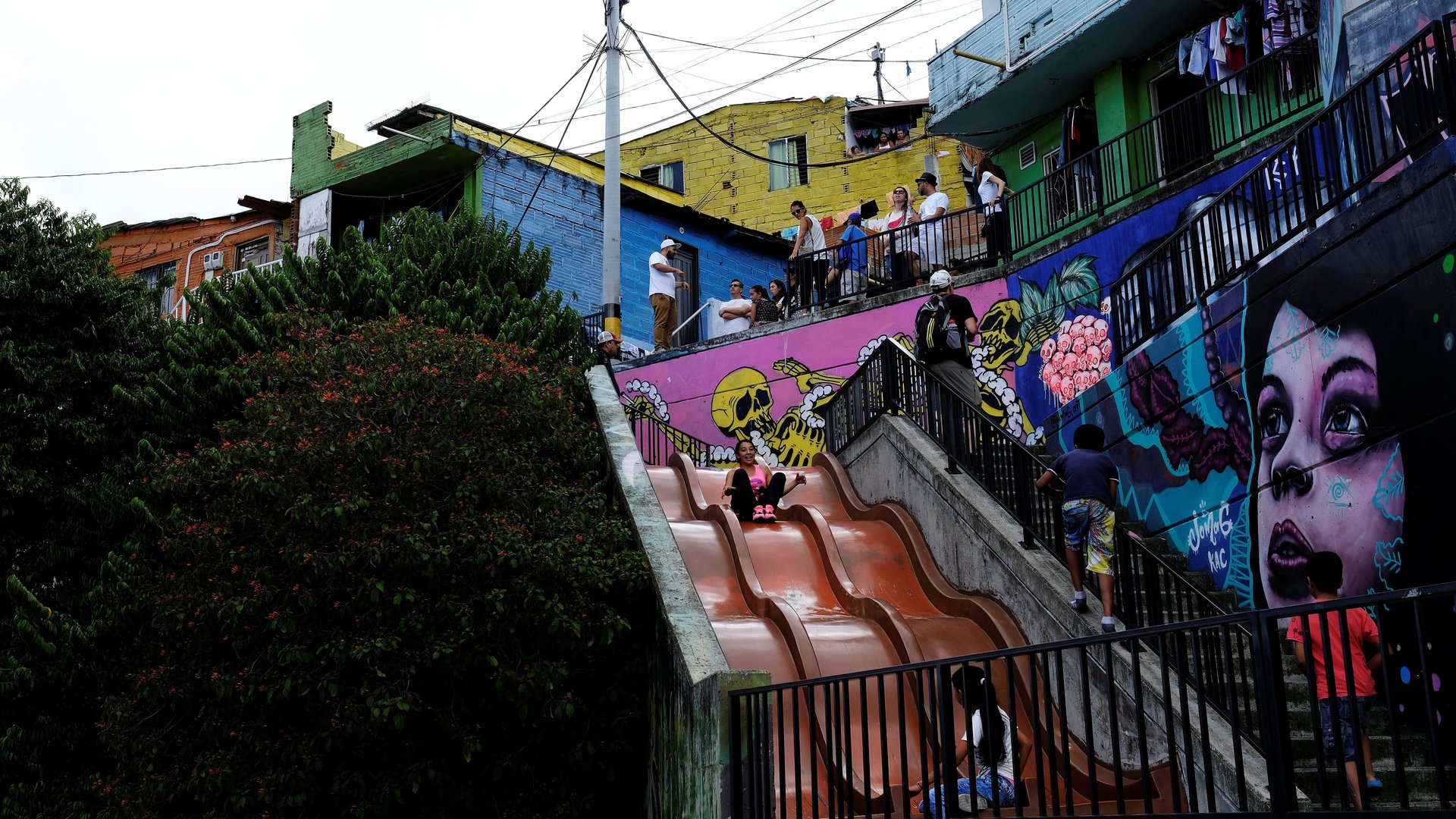The US embassy in Colombia warned visitors that using dating apps could be lethal
The US Embassy Bogota is aware of eight "suspicious" deaths of private US citizens in Medellin in the last two months of 2023, many involving dating apps

US officials have a good reason for asking citizens visiting Colombia to refrain from using dating apps in the South American country.
Suggested Reading
“The US Embassy Bogota is aware of eight suspicious deaths of private U.S. citizens in Medellin between November 1 and December 31, 2023,” it said in a Jan. 10 statement. “The deaths appear to involve either involuntary drugging overdose or are suspected homicides.”
Related Content
Several of the deaths “involve the use of online dating applications,” the embassy said, explaining that criminals lure their victims to meet on these apps, only to later assault, rob, and even kill them.
The number of murders in the span of two months is shockingly high, but the nature of the crime is less surprising. Last April, the Colombia police arrested one woman and her two male accomplices for luring American citizen Paul Nguyen and drugging, robbing, and killing him in Medellin in November 2022. A few years before that, Eric Hall, was the victim of a similar crime at the same place—but he lived to tell the tale. In 2019, a Canadian professor was killed by a criminal gang that preyed on men looking for companionship by using a popular social media app.
If you’ve watched Netflix’s Narcos, you know Medellin as drug cartel leader Pablo Escobar’s playground. Headlines in the 1990s had dubbed it “the murder capital of the world.” But over the last two decades, Medellin went from “holding the mantle of the murder and organized crime capital of the world to luring in growing numbers of tourists,” according to non-profit think tank InsightCrime, which analyzes organized crime in Latin America and the Caribbean. The locals reclaimed their neighborhood “with gardening projects, clean-up efforts and public art projects reflecting on the violence they had endured and calling for peace.” Plus, the government has struck negotiations with some criminal outfits who have agreed to a ceasefire and a systematic reduction in clashes between rival gangs.
This new warning sets all that progress a few steps back.
Crime and reform in Medellin, by the digits
200%: Increase in thefts committed against foreign visitors (excluding Venezuelans) In the last four months of 2023, the US embassy said, citing data from the Tourism Observatory of the District Personnel of Medellin
29%: Surge in violent deaths between September and December 2023, with most of victims being US citizens, according to the US embassy
31%: Share of all personal robberies occurring in the first half of 2023 that El Poblado, Laureles, and Belén—the three most inhabited Comunas, or neighborhoods, by tourists in Medellin—account for. “They have all the amenities of a modern, comfortable, and upscale neighborhood. Unfortunately, this makes them ideal targets for thieves and criminals,” according to Medellin Advisors
54%: Individuals in Medellin who expressed fear of being victims of robberies in their neighborhoods, according to a survey of 1,616 people belonging to various sectors and socioeconomic strata conducted by NGO Como Vamos
381: Murders per 100,000 people in Medellin in 1991, “close to 40 times greater than the UN’s definition of endemic violence, at 10 per 100,000 people,” as per the Rapid Transition Alliance. It was four times the national homicide rate of Colombia.
15: Murders per 100,000 people in Medellin at the present time. It’s still above the UN’s threshold but a massive improvement. And it’s low compared to several other cities in the region. For instance, in some cities in Mexico, Venezuela, Brazil, and Paraguay, the rate is between 70 and 110 murders per 100,000 people.
4 square meters: Public space per resident Medellín had opened up by 2014—up from none before 1990. By 2030, it’s aiming for 15 square meters per person.
Dating app scams aren’t limited to Medellin
Medellin isn’t the only city where visitors have filed reports of Colombian dates committing robbery by force or using sedatives to drug and rob individuals against foreign nationals. Similar incidents have been reported in Bogota—Colombia’s capital and most populous city with over 8 million people—and tourist-favorite coastal spot Cartegena as well.
The US embassy also emphasizes that these are only the known incidents. Several of them go unreported because “victims are embarrassed and do not want to follow through with the judicial process.”
Beyond Colombia, there are cases of dating-app-prospects-turned-killers across the world, from Latin American countries such as Peru, Mexico, Argentina, and Brazil to halfway across the world in India. They lure victims and kill them over theft gone wrong, mishandled kidnapping—for ransom or not—and even marriage proposal rejections. And it’s not just one app that’s dangerous. There are horror stories across Bumble, Tinder, and more.
The US embassy’s advice for those who still want to use dating apps in Colombia
It’s also solid advice when using dating apps anywhere in the world.
🍽️ Meet only in public places and avoid isolated locations
🏨 Only let someone enter your residence or hotel room after working out a system with the door attendant or concierge of collecting valid ID upon arrival and the process that should be followed when the visitor departs.
🗣 Keep a friend of family member informed about detailed plans. “Victims who are targeted via online dating applications tend to have their electronic devices stolen which often contain all evidence of communication with the assailants.”
🏳 Don’t physically resist any robbery attempt. “Victims of crime who resist robbery are more likely to be killed.”
🤔 “Trust your instincts—if something does not feel right, do not hesitate to walk away from a situation.”
